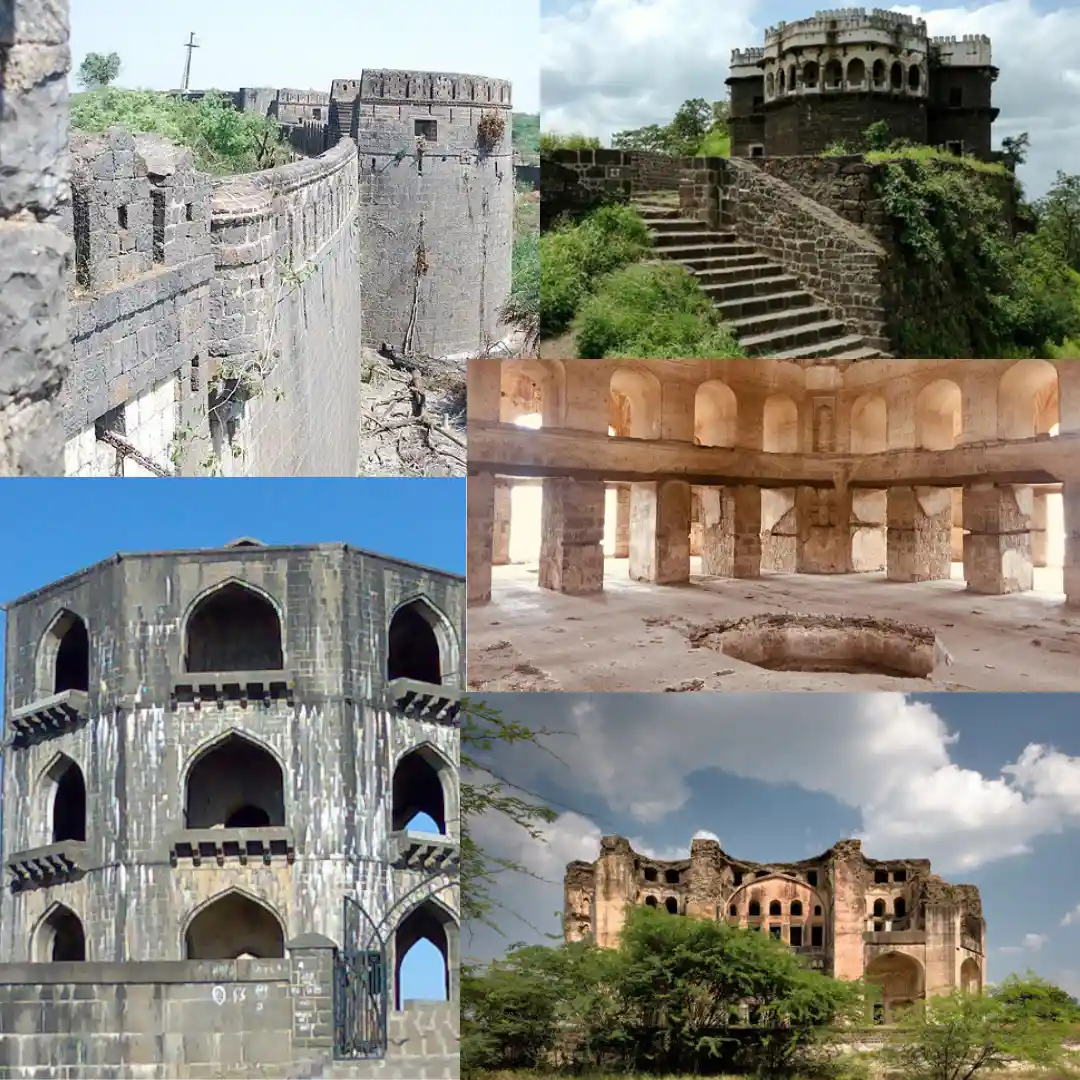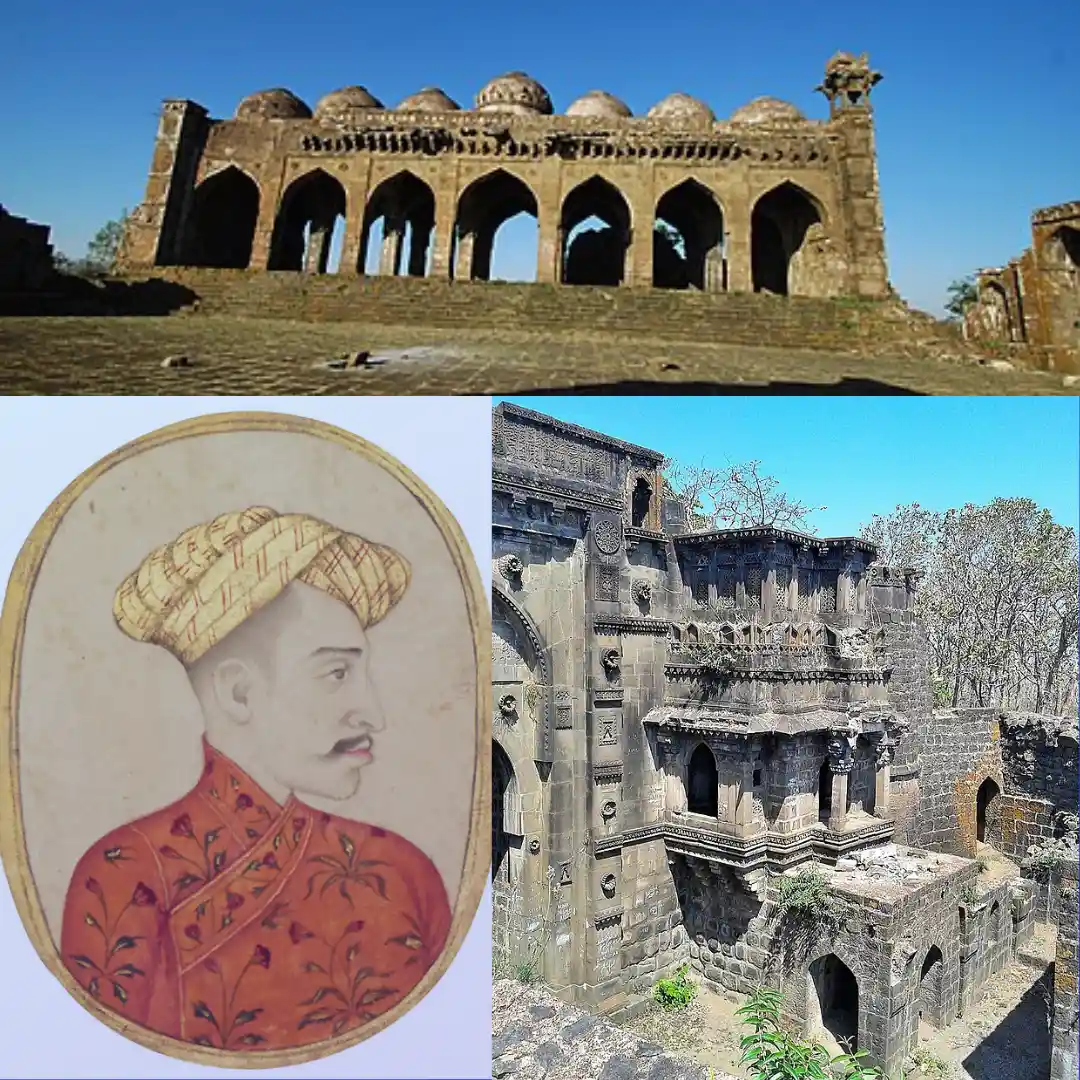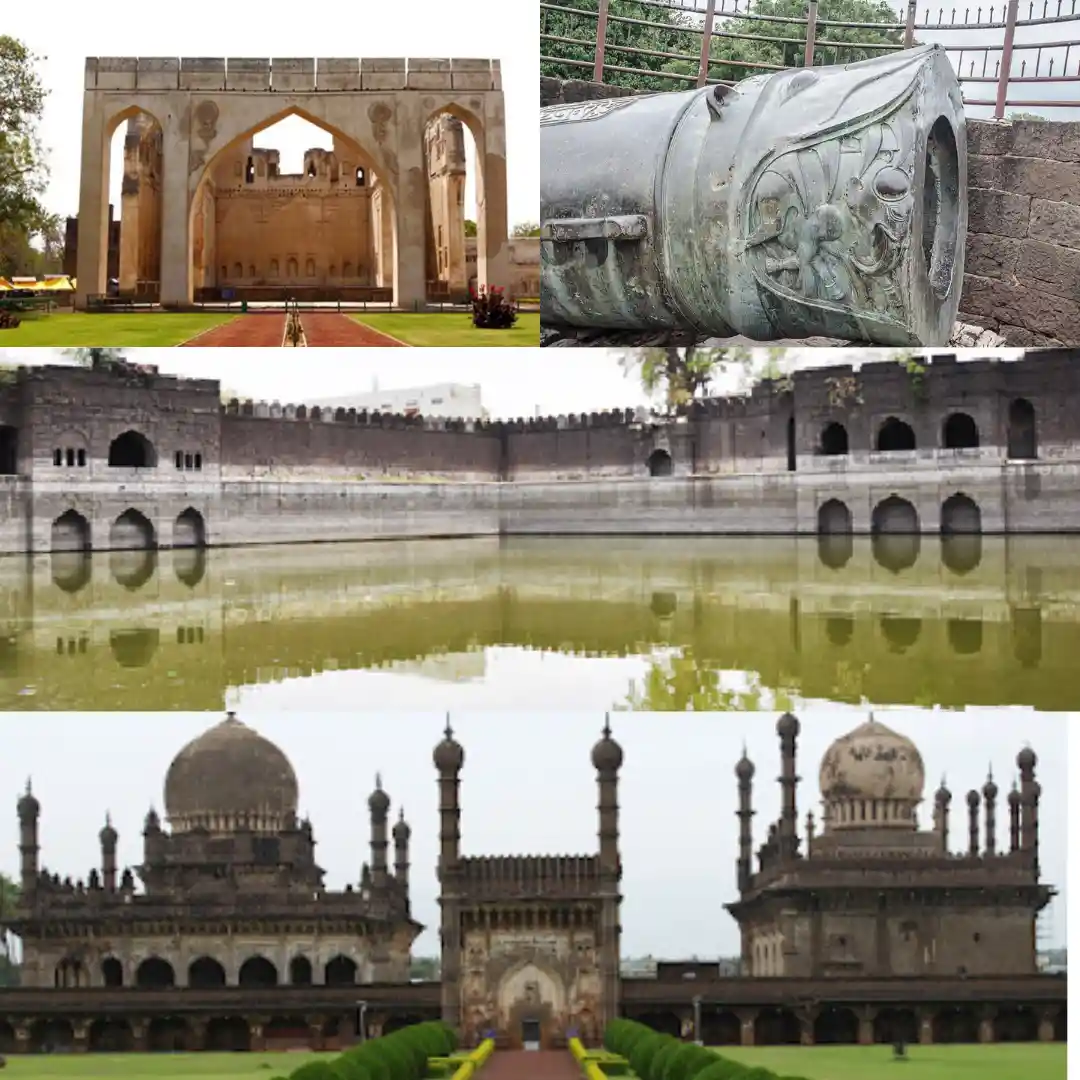Part II-Regal Treats in Deccan Monuments
The legacies of the Bahmanids branched out into five independent Sultanates in different provinces, which flourished until the Mughals overpowered them one by one. However, their short rule exemplified the saying, "Live life large size," and they certainly lived larger than life, leaving behind stories etched into the structures they built for us to behold and admire. As we turn the pages of our history, let us glimpse into their abundant lives through the countless monuments that adorned their heritage.

Cover Image Caption
Almost 8 centuries ago, Malik Ahmed, one of the governors of a Bahmani province, Junnar, contended with General Jehangir Khan of the declining Bahmani army and emerged victorious, claiming sovereignty over his domain. He proclaimed himself Malik Ahmad Nizam Shah I, the ruler of the Nizam Shahi dynasty, which spanned the lands between Gujrat and Bijapur. While initially establishing his capital around the Junnar fort, he later founded the city of Ahmednagar, known today as Shivneri. In the following decade, he expanded his dynasty by conquering neighbouring provinces like Mahuli, Pali, and Chavand, as well as the fortress at Daulatabad.
Due to the founder's Shia leanings, the city of Ahmadnagar reflected a Persian architectural layout and sought to emulate grand cities like Baghdad or Cairo. The Sultans of the Nizam Shahi dynasty made significant improvements to existing forts such as Junnar, Losa, Dharur, and particularly Daulatabad. The splendid gardens like Farah Bakhsh Bagh and Hasht Bihisht Bagh showcase the aesthetic imprints of this sultanate. Two prominent warrior personalities of the Sultanate were Mir Malik Ambar and Chand Bi Bi. Although the earliest school of painting originated from this sultanate, unfortunately, only recorded texts remain today.
The Bijapur Sultanate, bordering the Berar Sultanate, was one of the two major Deccan sultanates that posed the greatest resistance to the Mughal Empire. Once a province of the Bahmani dynasty, the powerful governor of Bijapur, Sultan Yusuf 'Adil Shah Savah, declared himself the sovereign ruler of the territory. Historian Mir Rafi-uddin Ibrahim-i Shirazi mentions him as the son of an Ottoman Sultan from Tehran and the founder of the Bijapur Sultanate. He is credited with the construction of the Bijapur fort and the Faroukh Mahal. The golden era of this sultanate was ushered in by his grandson, Ibrahim Adil Shah I, who expanded the dynasty and fortified the grand old Jamia Masjid, capable of accommodating 4,000 worshippers at once. Among the many grand structures he built, the Gagan Mahal, his own tomb Ali Raouza, and the Taj Bawdi (grand well) stand out.
In the last quarter of the 16th century, the Nizam Shahi dynasty annexed the Berar Sultanate, adding the regions of Andhra to their realm. They adorned their kingdom with elaborate palaces and masjids, but today, only a handful of them remain functional and officially documented, while the rest lie in ruins due to neglect and vandalism. Many structures were destroyed during the British Empire, and a few palaces now serve as government offices in a state of disrepair. For instance, the Mangani Mahal has become a city jail, the District Court resides in a palace with an impressive Changiz Khan ceiling, and the District Collector occupies Qasim Khan's palace with two unique stone columns. Only a few monuments, including the Mecca Masjid and the one at Bara Imam Kotla, Salabat Khan and Sarje Khan's tombs, Mangalwar Gate, and the Farah Bakhsh Bagh, are listed as protected structures.
Before Malik Ahmad, Berar was one of the five major provinces during the Bahmanids, divided into two regions, Mahur and Gawli, with their respective capitals. Fathullah Imad-ul-Mulk, the governor of Berar, opposed this division and declared himself the de facto ruler, establishing the Imad Shahi dynasty of the Berar Sultanate based in Gawli. He later annexed Mahur into his dynasty and proclaimed Ellichpur (now Achalpur in the district of Amravati, Maharashtra) as the capital city. The founder fortified the forts of Gavilgad and Narnala. The dynasty faced relentless challenges from the rulers of Ahmadnagar and sought alliances with the Sultan of Gujarat and later the Bijapur Sultanate, but these efforts proved futile. After a century of strife, when the contemporary ruler Burhan Imad Shah was deposed by his own minister Tufail Khan, the Sultan of Ahmadnagar, Murtuza Nizam Shah, seized the opportunity and annexed the entire Berar Sultanate into his territory.

Collage created in Canva: Clockwise from top-left — Ahmadnagar Fort, Daulatabad Fort, Interior of Farah Bagh, Ruins of Farah Bagh and Salabat Khan tomb; Source: Wikimedia, Wkivoyage, MetMuseum.org and Total Safari

Gol Gumbaz of Bijapur Sultanate; Source: Wikimedia

Collage created in Canva: From top clockwise — Part of Gavilgad Fort, Entrance of Narnala fort and A portrait of Berar Sultanate Founder — Fathullah Imad-ul-Mulk; Source: Wikimedia and Notes on Indian History
Chand Bi Bi, the wife of Ibrahim Adil Shah I, is among the women warriors of India and the only one from the Deccan Sultanates to have acted as the regent to the next successor of the childless sultan. Ibrahim Adil Shah II, the nephew of the deceased sultan, bravely carried forward the flourishing dynasty while patronising art and architecture like his predecessors. It was his son, Muhammad Adil Shah, who bequeathed the greatest gem of this dynasty – the Gol Gumbaz. Renowned for its second-largest dome without pillars in the world, second only to St. Peter's Basilica in Vatican City, the Gol Gumbaz is an architectural marvel. The dome features a remarkable Whispering Gallery where even the slightest whisper echoes seven-ten times and can be heard across a space of 37-38 meters. Some visitors claim they can even hear beyond into the surrounding garden. Historians believe that the patron intended to showcase the vastness of his kingdom through the extraordinary size of the dome that adorns the corners of the cubed structure. The octagonal towers on each corner of the main cube rise in seven vertical rows of arched floors, each crowned by a dome and containing a staircase within.
The Deccan Plateau, stretching from Western to Southern India and previously housing kingdoms reaching the Vindhyas in the north, served as a global centre of culture and commerce. It was a multicultural and diverse society, home to various ethnic, racial, and religious groups, and was ruled by diverse powers such as the Vijayanagara Empire, Deccan Muslim Sultanates, Mughals, Marathas, and ultimately the British. The physical fabric of the Deccan Plateau is adorned with countless treasures, blending Turkish, Deccani, Persian, and Ottoman styles, a testament to the rich heritage of the Deccan sultanates.

Collage created in Canva: From Top-Left — Ganga Mahal, Malik-e-Maidan Cannon, Taj Bawdi and Ali Rouza Tomb; Source: Vijayapura.nic.in, Wikimedia, Karnataka Travel Blogspot and Kannada Native Planet.


